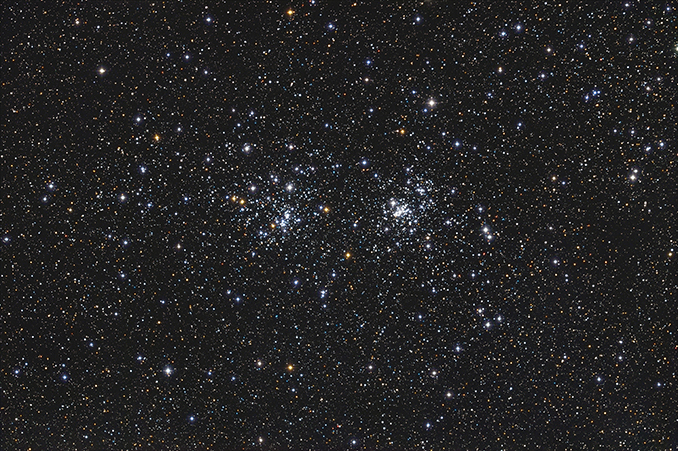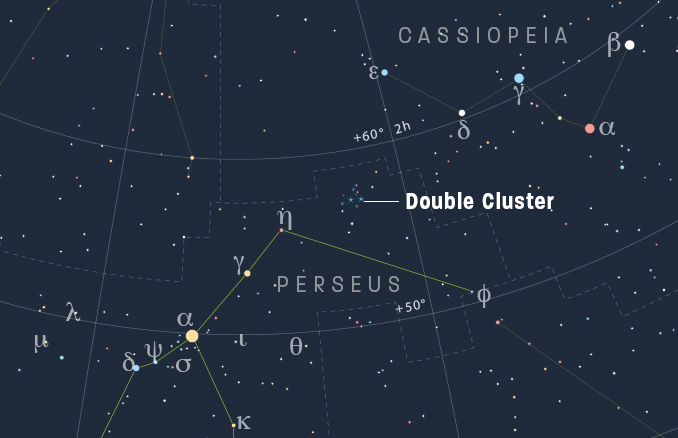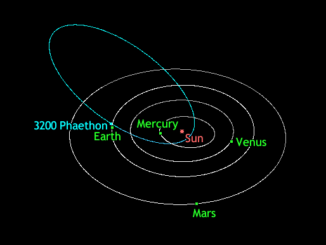
Apart from perhaps the superb Pleiades open cluster in Taurus, the magnificent pair of open clusters forming the Double Cluster in Perseus is the finest in its class at mid-northern latitudes. Formally classified as NGC 869 and NGC 884 (h and chi [χ] Persei, respectively), either cluster rivals or eclipses the vast majority of open clusters, including those of the Messier variety. As a pair though, the Double Cluster is one of the most stunning of deep-sky objects in the entire sky.
The Double Cluster can be spied without optical aid on the best of nights at a dark-sky location, but a never-to-be-forgotten sight awaits through a pair of binoculars or a small telescope – the field of view strewn with myriad, sparking jewels of varying brightness and colour set against a deep velvet backdrop. One could go as far as to argue that only the Moon provides a finer binocular view! This is an object where smaller is best: an 80mm, f/5 refractor at 40× frames the pair, covering a degree across side by side, nicely.
The Double Cluster is easy to find; lying close to Perseus’ northern boundary with Cassiopeia, the latter’s famous ‘W’ asterism can be put to good use as a celestial signpost. First, locate the central star of the five stars in the ‘W’, gamma (γ, mag. +2.1) and then Ruchbah (delta [δ], +2.7), the next star eastwards. If you sweep eastwards by roughly two lengths of an imaginary line between the two stars (roughly seven degrees in total), then you should land on the Double Cluster with little difficulty.
Each cluster spans about 30 arcminutes across, the same size as the full Moon. NGC 869, the more westerly of the two, has a slightly more concentrated core than NGC 884 and is brighter overall too, with an integrated mag. of +5.3 as opposed to its companion’s +6.1. A pair of 10×50 binoculars easily resolves most of stars lying in both clusters, which range in magnitude from +7 to +10.
On early November nights, the Double Cluster culminates very close to the zenith (it’s circumpolar [never setting] from the UK), where the sky is at its most transparent and steady, and at the reasonably-sociable hour of about 11pm.




